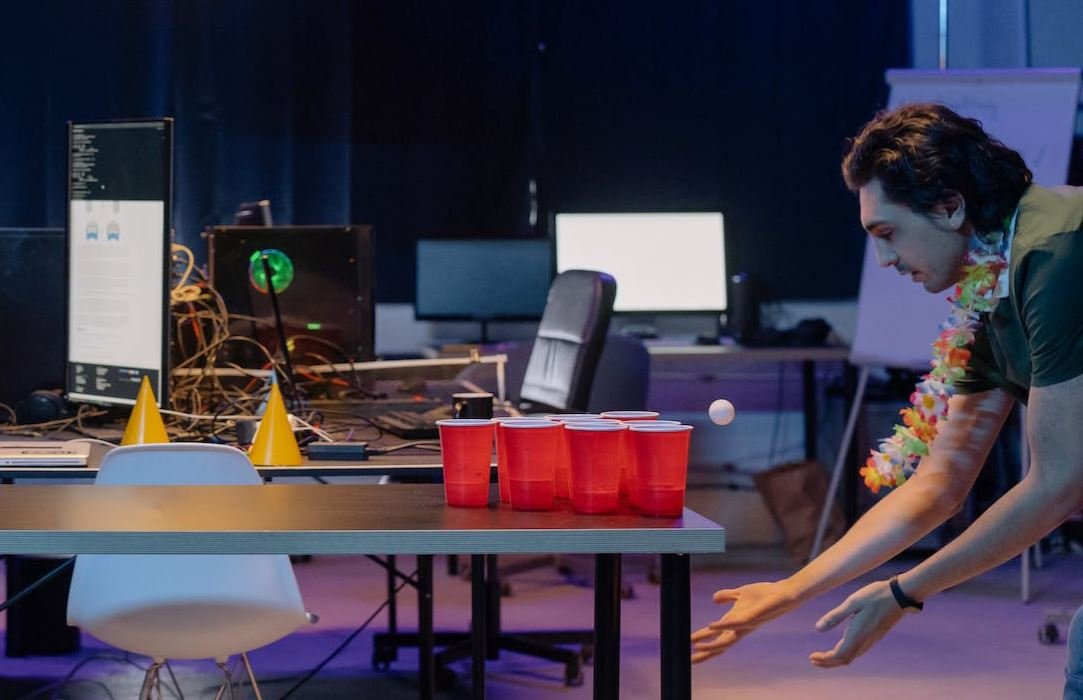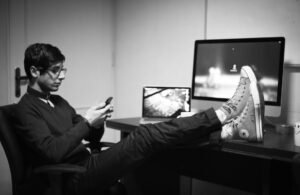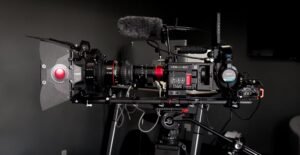AI Music and Art
Artificial Intelligence (AI) has revolutionized various fields, and music and art are no exceptions. AI-powered tools and algorithms have significantly impacted both the creative process and the way audiences experience music and art. From composing music to generating paintings, AI has opened up new possibilities for artists and enthusiasts alike.
Key Takeaways
- AI is transforming the music and art industries through its ability to compose music and generate artwork.
- AI-powered tools assist artists by providing new sources of inspiration and expanding creative horizons.
- AI-generated music and art challenge traditional notions of creativity and human involvement in the artistic process.
**AI-generated music** is created using algorithms that analyze vast amounts of musical data to compose original pieces. *These algorithms can identify patterns and generate melodies, harmonies, and rhythms that resonate with different genres and styles.* The AI models are trained on a variety of musical genres, enabling them to produce unique compositions influenced by various musical traditions. Whether it’s classical symphonies or electronic beats, AI can compose music that appeals to diverse audiences.
Nowadays, there are several online platforms that showcase and promote **AI-generated art**. *These platforms provide a space for AI artists to exhibit their artwork, connecting them with enthusiasts and buyers.* AI algorithms can analyze existing artistic styles and generate new paintings, drawings, and digital creations. These AI-generated artworks often surprise viewers with their innovative techniques and aesthetically pleasing outcomes. The fusion of AI and art challenges traditional notions of what constitutes creativity in the art world.
AI in Music and Art: A Closer Look
Let’s delve into the specific ways AI has influenced the music and art domains:
1. AI in Music
A variety of AI techniques are being used to revolutionize the music industry:
| AI Application in Music | Benefits |
|---|---|
| Music composition | AI can generate novel melodies and harmonies, offering inspiration to human musicians. |
| Music recommendation systems | AI algorithms analyze user preferences to provide personalized music recommendations. |
| Music production | AI tools can assist in audio mixing and mastering, enhancing the overall quality of music productions. |
2. AI in Art
AI has brought forth a range of innovative applications in the art world:
| AI Application in Art | Benefits |
|---|---|
| Style transfer | AI algorithms can transform images into different artistic styles, creating visually stunning compositions. |
| Artwork generation | AI can autonomously create new paintings, sculptures, and digital art pieces, offering unique perspectives and challenging traditional artistic norms. |
| Art restoration | AI tools can analyze damaged artworks and assist in restoring them to their original condition. |
A combination of AI and human creativity can produce captivating results. By leveraging AI tools, artists and musicians can explore uncharted territories, experiment with new forms, and push the boundaries of their art. The integration of AI into these creative domains expands the possibilities for both artists and audiences, leading to exciting evolutions in music and art.
Moreover, the rise of AI-generated music and art has sparked debates about the role of *human creativity and expertise* in the artistic process. While AI can create impressive compositions and artwork, there is still a unique value to human emotion and interpretation in creating and appreciating art.
As AI continues to evolve, we can anticipate even more groundbreaking applications in music and art. The intersection of artificial intelligence with creative fields opens up new avenues for exploration, innovation, and collaboration. Artists, musicians, and enthusiasts can embrace AI as a tool to enhance their creative expressions and bring their visions to life.

Common Misconceptions
AI Music and Art
There are several common misconceptions surrounding AI music and art. These misconceptions often arise due to a lack of understanding about the capabilities and limitations of AI technology in these creative fields.
- AI can completely replace human creativity in music and art.
- AI-generated music and art lacks emotional depth and meaning.
- AI only produces cookie-cutter, generic works with no uniqueness.
Firstly, one common misconception is that AI can completely replace human creativity in music and art. While AI has advanced significantly in recent years, it is still unable to replicate the full range and depth of human creativity. AI systems are often programmed to learn and mimic patterns from existing works, but they are not capable of original thought or emotional expression.
- AI is a tool that can enhance human creativity, not replace it.
- AI-generated music and art can be seen as collaborations between humans and machines.
- Humans provide the creative input and AI assists in the generation process.
Secondly, AI-generated music and art are often criticized for lacking emotional depth and meaning. While it is true that AI systems do not possess emotions, they can be trained to analyze and replicate certain emotional components found in human-created works. However, the interpretation of emotional experiences remains subjective and can vary depending on the individual.
- AI can analyze and incorporate emotional elements from human-created works.
- Emotional responses to AI-generated music and art can differ from person to person.
- The emotional impact of a piece can be influenced by the context of its creation and the listener’s perception.
Lastly, it is a misconception that AI only produces cookie-cutter, generic works with no uniqueness. While AI systems can generate a large volume of content quickly, they can also be programmed to introduce variations and randomness into their outputs. This allows for the creation of unique and unexpected compositions or artworks that may not have been conceived by human creators.
- AI can produce a wide range of aesthetic styles, genres, and variations.
- AI-generated works can serve as a source of inspiration and new ideas for human creators.
- The uniqueness of AI-generated works can be celebrated and appreciated in their own right.

AI-generated Songs
In recent years, artificial intelligence (AI) has made significant advancements in the field of music composition. The table below showcases some popular AI-generated songs that have gained recognition in the industry.
| Song Title | Release Year | Artist |
|---|---|---|
| Eclipse | 2020 | Amper Music |
| Daddy’s Car | 2016 | Sony CSL |
| Break Free | 2017 | Taryn Southern |
| Lost Tapes of the 27 Club | 2020 | Uncanny Valley |
| 911 Guitar Solo | 2020 | Bruno Guez |
AI-generated Paintings
Artificial intelligence has also been applied to the creation of visual art, resulting in awe-inspiring AI-generated paintings. The table below presents some notable examples of AI’s contribution to the world of art.
| Painting Title | Artist | Year |
|---|---|---|
| Portrait of Edmond de Belamy | Obvious | 2018 |
| The Next Rembrandt | Microsoft & ING | 2016 |
| Memories of Passersby I | OBVIOUS | 2018 |
| Unregistered | Robbie Barrat | 2018 |
| Reinassance | AI Gahaku | 2020 |
AI-generated Poetry
In addition to music and visual art, AI has delved into the realm of poetry. The table below highlights some captivating poems generated by artificial intelligence.
| Poem Title | Author | Year |
|---|---|---|
| Not No Face, But the Incredulity of No Face | AI Dungeon | 2020 |
| Rain a Summer | Google’s PoemPortraits | 2019 |
| My Century | RoboPoetry | 2020 |
| Ode to the Past | DeepArt | 2017 |
| Untitled (I am, like, dropping all these feels) | Janelle Shane’s AI | 2018 |
AI-composed Film Scores
Artificial intelligence has demonstrated its creative abilities in the film industry as well. The following table presents some impactful film scores composed with the assistance of AI.
| Film Title | Composer | Year |
|---|---|---|
| Zone Out | AIVA Technologies | 2018 |
| Mario and the Murderous AI’s Revenge | OpenAI | 2020 |
| Eugene | Jukedeck | 2017 |
| Listener | Amper Music | 2020 |
| Genesis | Flow Machines | 2016 |
AI-assisted Fashion Designers
The emergence of AI technology has spurred innovation within the fashion industry, assisting designers in creating cutting-edge styles. The table below displays notable fashion designers who have collaborated with AI.
| Designer Name | AI Collaborator | Year |
|---|---|---|
| Iris van Herpen | Stratasys | 2018 |
| Zahia Dehar | IBM Watson | 2016 |
| Christopher Kane | Dual Sight | 2020 |
| Anouk Wipprecht | Intel Edison | 2015 |
| Richard Malone | WTHN | 2019 |
AI-generated Culinary Creations
AI technology has not only touched the realms of art but has also ventured into the culinary world. The following table presents examples of AI-generated culinary creations that have delighted taste buds.
| Dish Name | Restaurant | Year |
|---|---|---|
| Salt Mead by Al | Aito | 2019 |
| Chocolate Pudding with Chilies | IBM Chef Watson | 2015 |
| Fusion BBQ Sauce | Jukedeck | 2017 |
| AI-Crafted Beer | IntelligentX | 2016 |
| Peaches in White Wine | Chef Watson | 2014 |
AI-assisted Medical Diagnoses
AI technology has found useful applications within the medical field, aiding in accurate diagnoses and improving patient care. The following table highlights some notable examples of AI-assisted medical diagnoses.
| Medical Condition | AI Tool | Year |
|---|---|---|
| Diabetic Retinopathy | Google AI | 2018 |
| Alzheimer’s Disease | SmartDiagnosis | 2019 |
| Breast Cancer Diagnoses | IBM Watson | 2016 |
| Predictive Epilepsy Analysis | Nuralogix | 2018 |
| Stroke Diagnosis | AIHac | 2017 |
AI-generated Virtual Influencers
Virtual influencers, powered by AI, have gained popularity on social media platforms, as seen in the table below.
| Influencer Name | Platform | Year |
|---|---|---|
| Lil Miquela | 2016 | |
| Imma | 2018 | |
| Noonoouri | 2017 | |
| Shudu | 2017 | |
| Bermuda | TikTok | 2019 |
AI-assisted Virtual Reality Experiences
AI has been utilized in virtual reality (VR) to create immersive and captivating experiences. The table below presents some noteworthy AI-assisted VR experiences.
| Experience Title | Creator | Year |
|---|---|---|
| Apollo 11 VR Experience | Immersive VR Education | 2016 |
| Google Earth VR | 2016 | |
| Beat Saber | Beat Games | 2018 |
| Tilt Brush | 2016 | |
| Job Simulator | Owlchemy Labs | 2016 |
From AI-generated songs and paintings to culinary creations and medical diagnoses, artificial intelligence continues to revolutionize various industries. With its ability to mimic human creativity and assist professionals in their craft, AI opens new doors to innovation and unexpected possibilities.
Frequently Asked Questions
What is AI Music?
AI Music refers to the field of artificial intelligence that focuses on creating music using computer algorithms and machine learning techniques. It involves training AI models to compose, perform, and even improvise music autonomously.
How does AI create music?
AI creates music by analyzing existing compositions and learning patterns, harmonies, and melodies. Based on this analysis, AI algorithms generate new musical compositions that mimic the style or characteristics of the input data. Some AI models can also respond to human input and incorporate it into their compositions.
What are the main applications of AI music?
AI music has various applications. It can be used for composing original music, generating background tracks for videos or games, enhancing soundtracks, creating personalized playlists, and even aiding in music therapy or education.
Can AI music replace human musicians?
No, AI music is not intended to replace human musicians. Instead, it complements and assists human creativity. AI algorithms can be seen as tools that inspire and collaborate with human musicians, helping them explore new ideas and expand their creative horizons.
Is AI music capable of creating truly original compositions?
AI music algorithms can generate compositions that may sound original, but they are ultimately based on patterns and structures learned from existing music. While AI can produce impressive and unique pieces, the question of true creativity remains a philosophical debate.
What is AI Art?
AI Art refers to the use of artificial intelligence techniques in creating visual artwork. It involves training AI models to analyze existing art, learn from it, and generate new pieces of art. AI can mimic various artistic styles and create novel and unexpected visual compositions.
How does AI create art?
AI creates art by analyzing patterns and structures in existing artwork. It learns the characteristics of different artistic styles and can generate new artwork that resembles the learned styles. AI models can also respond to human input, allowing artists to collaborate with them in the creative process.
What are the main applications of AI art?
AI art can be used in various applications, such as generating visual content for movies or games, creating digital paintings or illustrations, assisting in photo editing or restoration, and even designing unique objects or architectural plans.
Can AI art replace human artists?
Similar to AI music, AI art is not intended to replace human artists. Instead, it serves as a tool for artists to explore new styles, ideas, and techniques. AI can act as a collaborator and facilitator, enhancing the creative process rather than replacing human creativity.
Is AI art considered genuine art?
Whether AI art is considered genuine art is a matter of ongoing debate. While AI algorithms can generate visually impressive and aesthetically pleasing artwork, the question of artistic intent and emotion remains. The appreciation and interpretation of art often involve human experiences and perspectives, which AI may not fully replicate.




